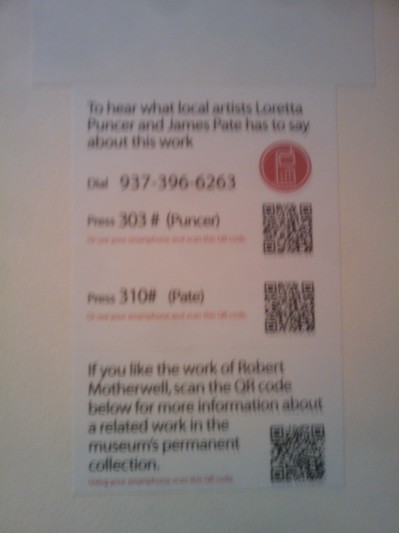We spend some time in the very congenial Dayton Art Institute this afternoon. We wandered around the Modern Masters exhibition (from the Smithsonian American Art Museum). I was interested to see the QR codes by the pictures. Here is a somewhat fuzzy picture taken by my son on his phone:

Now, the exhibition is an obvious place to exploit QR codes – to connect what you can see to commentary, to related work, to further information and so on. In this case, you could link to a spoken commentary on the work by local artists, or to other works in the Dayton collections by the same artist. I thought that the use of the codes in this way to tie a touring exhibition into local context was quite nice.
I didn’t immediately see a copy of a code for further information about the exhibition on the website.
I have been peripherally aware of a discussion of QR codes in this context. And I have been watching out for various uses in our space again since hearing the very nice presentation by Andy Walsh at Emtacl10. As I previously reported, he noted that as library spaces became places for social activity, their specifically informational dimension was waning. And that this was a pity, and in the long term probably not very helpful for the library. He suggested that QR codes (and RFID tags) were one way of reconnecting those places to an informational dimension, and gave examples of how codes and tags could be used to link library places to information resources and services.
In this case I was interested that my (12 year old) son was very interested in the codes and scanned a couple. A small extra hook 😉
Share
More from LorcanDempsey.net



